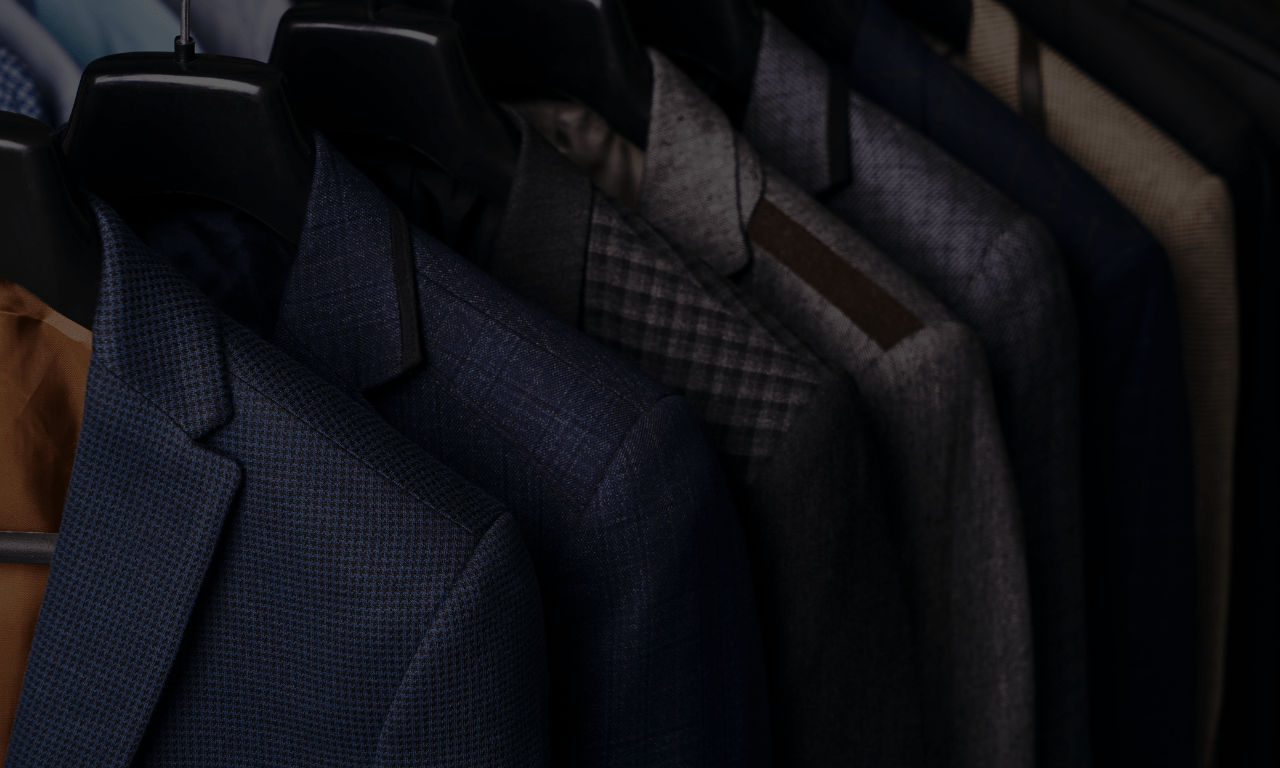Ensuring a perfect fit for blazers, suits, and sport coats involves meticulous attention to various elements that define the garment’s elegance and comfort. Understanding these key elements is paramount for achieving a refined and polished appearance.
Suits:

The history of suits traces back to the early 19th century, primarily evolving from men’s formal attire. The modern suit, as we recognize it, emerged during the late 19th century, thanks to the innovations introduced by Savile Row tailors in London. These tailors revolutionized men’s fashion by introducing the lounge suit, characterized by a matching jacket and trousers, setting the foundation for the modern suit. Initially worn by the elite and later embraced by men from diverse social classes, suits became a symbol of sophistication and professionalism. Over time, they evolved to accommodate various style trends while retaining their essence as a classic and versatile ensemble, representing elegance and refinement in menswear.
In the realm of suits, the fit of the jacket and trousers intertwines to create a cohesive ensemble. For the suit jacket, the shoulder fit mirrors the blazer, ensuring a clean line without any sagging or constriction. The jacket should comfortably button without excessive tension, allowing for easy movement while maintaining a sleek appearance. The jacket length plays a crucial role, falling just below the seat and covering the backside adequately. Paired with well-fitted trousers that rest comfortably at the waist without sagging or pulling, a suit ensemble exudes timeless elegance.
Blazers:
Originally stemming from the British Navy, blazers found their inception as part of naval uniforms in the early 19th century. Their name originates from the bright blue jackets with brass buttons worn by members of the HMS Blazer crew during a visit by Queen Victoria in 1837. These jackets were later adopted by rowing clubs and schools as part of their uniform, evolving into the blazers we recognize today. The blazer transitioned from a functional uniform to a versatile garment symbolizing elegance and sophistication. Its evolution from a naval uniform to a fashion statement speaks volumes about its enduring appeal and versatility, transcending its military origins to become a timeless piece in men’s fashion.
When considering the fit of a blazer, attention to the shoulder is fundamental. The seam should precisely align with the edge of your shoulder, neither hanging over nor bunching up. Additionally, a well-fitted blazer ensures that it comfortably closes without any strain or excessive pulling across the chest or midsection. Proper sleeve length is crucial, ending just at the base of your thumb, allowing a subtle reveal of the shirt cuff. These elements collectively contribute to a sharp and sophisticated look.
Sport Coats:
Sport coats, or sports jackets, have their origins in the British countryside during the 19th century. Initially tailored for outdoor activities like hunting or shooting, these jackets were designed to provide both style and functionality. Constructed from durable materials such as tweed or other heavyweight fabrics, sport coats featured patch pockets and a more relaxed fit compared to suits. They gained popularity among the upper class for their versatility, allowing men to maintain a smart appearance while engaging in leisure activities. Over time, sport coats transitioned into a wardrobe staple, embraced for their casual yet refined aesthetic, evolving into a versatile piece suitable for various social settings.
Sport coats, prized for their versatility, demand attention to specific fit elements. Similar to blazers, the shoulder fit remains pivotal, aligning seamlessly with the natural shoulder line. The sport coat’s structure should allow for layering underneath without appearing too loose or boxy. Optimal sleeve length is key, extending to the base of the thumb, allowing for a subtle display of the shirt cuff. A well-fitted sport coat strikes a balance between refinement and ease, offering sophistication for various occasions.
Read more: The Sport Coat : The 170 year old history of the Best & Most Versatile Men’s Attire.
Transition to Common Fit Elements:
Despite their subtle differences, blazers, suits, and sport coats share common fit elements integral to their overall appearance. These elements include proper shoulder alignment, ensuring ease of movement without constriction or slackness. Attention to sleeve length—ending at the base of the thumb—maintains a polished look, whether for a blazer, suit, or sport coat. The garment’s silhouette, irrespective of the type, should offer a tailored appearance without appearing overly tight or excessively loose.
Tailoring Considerations:
Tailoring serves as the final touch to achieve an impeccable fit. A skilled tailor can refine the fit, adjusting sleeve length, taking in or letting out the waist, or ensuring the perfect shoulder proportion. Tailoring ensures that your blazers, suits, or sport coats become personalized pieces, perfectly aligning with your physique and style preferences.
Conclusion:
Mastering the elements of fit for blazers, suits, and sport coats involves meticulous attention to detail. From shoulder alignment to sleeve length and overall silhouette, each element contributes to a garment’s refined appearance. Understanding these key fit elements allows individuals to confidently select and tailor blazers, suits, and sport coats that encapsulate both sophistication and comfort in every wear.


One response to “Blazers, Suits, and Sport Coats: What are they?”